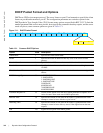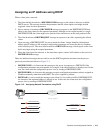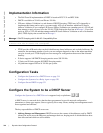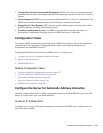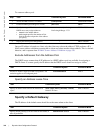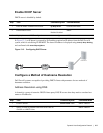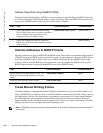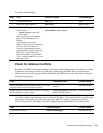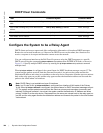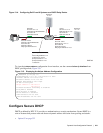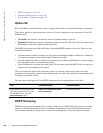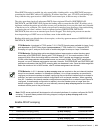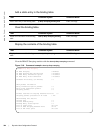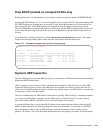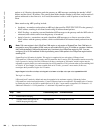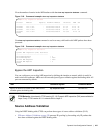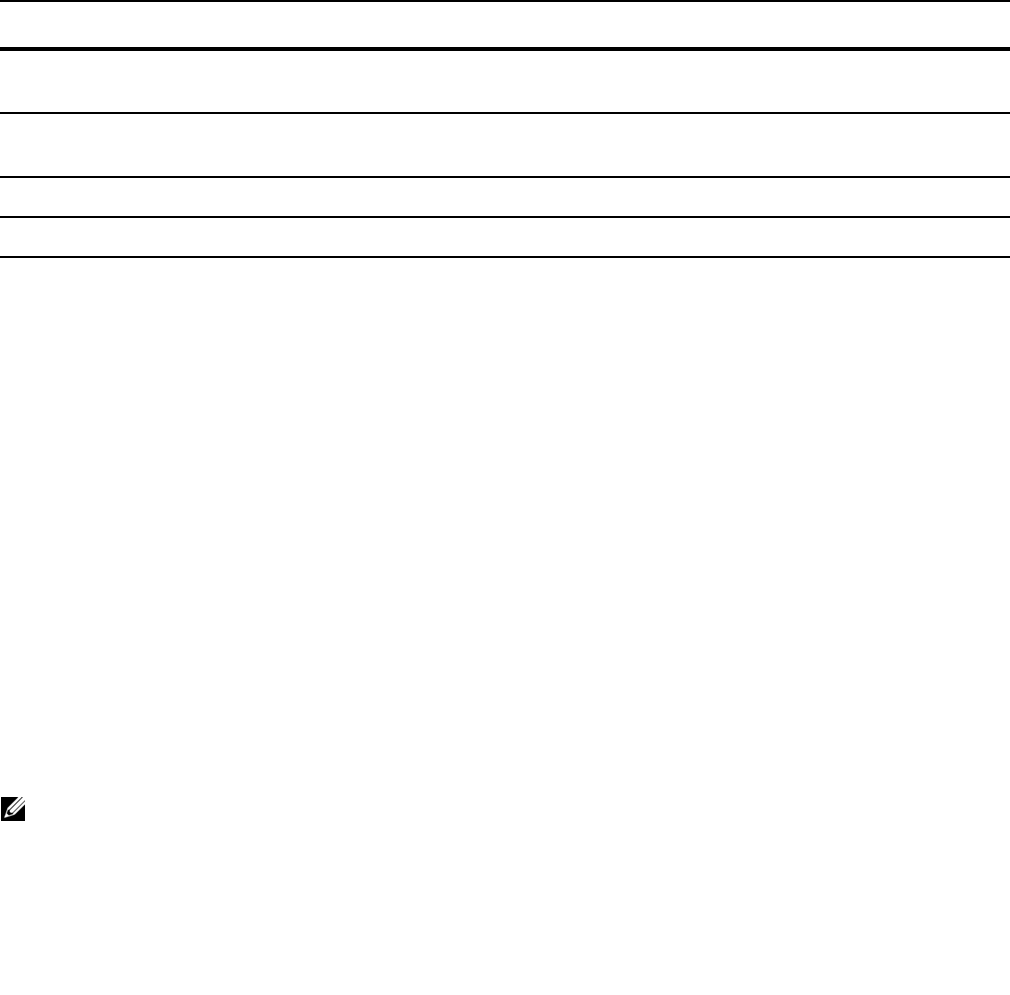
320 | Dynamic Host Configuration Protocol
www.dell.com | support.dell.com
DHCP Clear Commands
Configure the System to be a Relay Agent
DHCP clients and servers request and offer configuration information via broadcast DHCP messages.
Routers do not forward broadcasts, so if there are no DHCP servers on the subnet, the client does not
receive a response to its request and therefore cannot access the network.
You can configure an interface on the Dell Force10 system to relay the DHCP messages to a specific
DHCP server using the command
ip helper-address dhcp-address from INTERFACE mode, as shown in
Figure 13-4. Specify multiple DHCP servers by entering the
ip helper-address dhcp-address command
multiple times.
When
ip helper-address is configured, the system listens for DHCP broadcast messages on port 67. The
system rewrites packets received from the client and forwards it via unicast; the system rewrites the
destination IP address and writes its own address as the relay device. Responses from the server are unicast
back to the relay agent on port 68, and the relay agent rewrites the destination address and forwards the
packet to the client subnet via broadcast.
Task Command Syntax Command Mode
Clear DHCP binding entries for the entire binding
table.
clear ip dhcp binding
EXEC Privilege
Clear a DHCP binding entry for an individual IP
address.
clear ip dhcp binding ip address
EXEC Privilege
Clear a DHCP address conflict.
clear ip dhcp conflict
EXEC Privilege
Clear DHCP server counters.
clear ip dhcp server statistics
EXEC Privilege
Note: DHCP Relay is not available on Layer 2 interfaces.
Note: In a Private VLAN, ip helper-address is configured from Interface VLAN mode of the Primary
VLAN. When ip helper-address is configured, the system listens for DHCP broadcast messages on port
67. The system rewrites packets received from the clients on primary and secondary (community and
isolated) VLANs and forwards it via unicast; the system rewrites the destination IP address and writes
primary VLANs IP as the relay device. Responses from the server are unicast back to the relay agent on
port 68, and the relay agent rewrites the destination address and forwards the packet to the client subnet
via broadcast.



